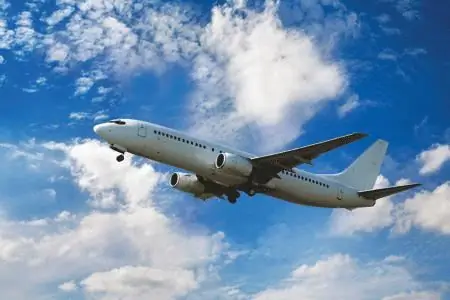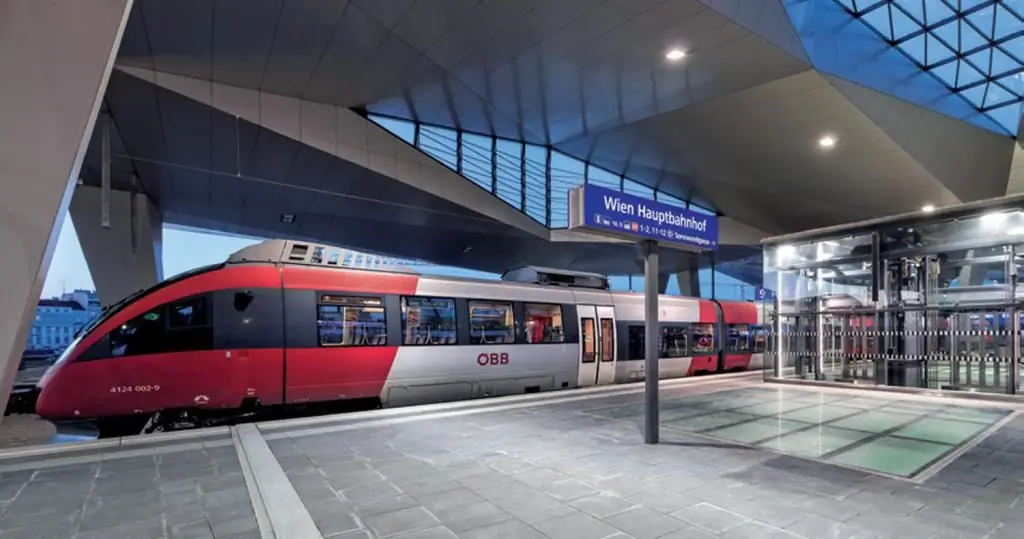- Author Harold Hamphrey [email protected].
- Public 2023-12-17 10:06.
- Last modified 2025-01-24 11:10.
The amount of time the average city dweller spends in their lifetime traveling from home to work and back, for example, is appalling. The figure is even more impressive if he is a resident of a metropolis, freezing twice a day in so-called traffic jams. This is one of the most important problems in organizing a comfortable environment in the city. And it can be, if not completely solved, then significantly reduced in severity if transport hubs and terminals are created correctly. So, what are they for and what are they?
What are transport hubs
There are a variety of ways to travel: buses, trams, trolleybuses, cars, planes, ships, trains, etc. As a rule, there are several ways to get from one point to another. But often, especially if the route is quite difficult, you have to change several modes of transport in order to reach your destination. And although, for example, you can transfer from a bus to a metro or a car in several places within any major city, it sometimes happens that you can leave one point in many ways at once. And then we will apply the term "transport hub". This place is constantly in full swing with life, hundreds and thousands of passengers rush about their business, arrivetrains, planes fly away, in general, at first glance, complete vanity and disorder reign. In fact, everything is different. With good organization, transport nodes are harmoniously working systems, where each part is a well-oiled mechanism that interacts with all other elements. And in this case, their value is difficult to overestimate.

Why are they needed
The time spent on a trip or delivery from one point to another in the modern rhythm of life should be minimized. People, tired of waiting, have made many inventions that allow you to get information instantly, to establish a connection. But, unfortunately, as long as there is no teleport, we are forced to spend quite a lot of time on the road. And sometimes you also have to go, for example, to the airport or station. The concentration of several modes of transport in transport hubs partially solves this problem. Firstly, in order, for example, to transfer from a train to a ship or plane, a minimum amount of time is required here - everything is literally within walking distance. Secondly, with the right location, even one hub can unload other transport arteries. As a result, everyone wins.

This reveals another aspect of the functioning of any node - it not only accumulates, but also regulates traffic flows according to the principle of the valve. If necessary, to avoid congestion and inconvenience, part of the passengers or cargo can be delayed at any stage. In a word, there are analogues hereroads and traffic lights.
Hubs are not only passenger, but also cargo. Even if we take the postal service industry - in every major city there will be a place that can be described as a central transport hub - this is where correspondence will flow, which later, after sorting, will go to smaller territorial divisions. And letters and parcels will also come here, so that later they can go, say, abroad. Do questions remain after this, are transport hubs needed?
Organization and structure
Logistics is not an easy, but very promising direction. It is she who helps to organize the work of any more or less large node correctly and as efficiently as possible. When building the structure of its work, it is important to take into account both the most basic things, for example, the methods of transporting cargo from one mode of transport to another and the necessary infrastructure, as well as very small nuances, such as convenient and intuitive navigation for passengers.
To simulate the operation of the hub, even at the design stage, special software is used to show what will happen when certain parameters are changed.

Accommodation
The right place is another important point when planning traffic flows. If the wrong choice is made, it can only worsen the situation. Inconvenient access roads will create traffic jams in the vicinity, and the lack of parking spaces will become a serious problem for motorists. The airport built in the lowland will cancel flights over and over again due tofor heavy fog. In general, it is very easy to make a mistake. And here the same science comes to the rescue, helping to model the situation with certain options. After all, a transport hub is not a place where people appear out of nowhere - they arrive in one way or another, and you need to make sure that it is convenient for them to do this.

Pros and cons
Properly organized transport hubs, at first glance, are completely devoid of flaws. But, unfortunately, this is not entirely true. Firstly, it is obvious that their operation is not silent, and placing them far from the main streams is meaningless, so they interfere with anyone anyway. Secondly, due to the fact that there are a huge number of people busy with their thoughts, it is in the hubs that a lot of theft occurs, despite the large number of security measures. Moreover, and this is much worse, transport hubs often become the site of major terrorist attacks. With a sufficient density of passenger traffic, this can result in a huge number of victims and injured. However, there is such a danger for all places where a large number of people gather at once.

Examples
Practically every major European city is an international transportation hub. Amsterdam, London, Berlin: flights with transfers at local airports are common. In the East, these are Doha, Shanghai, Dubai, which receive a huge number of transit passengers. Moscow with its three only passengerairports, as well as nine railway stations, can also be included in this list.
At lower levels, nodes are correspondingly less significant in scale. An example is the same Simferopol in the Crimea. Well, any metro station in Moscow can be called completely local hubs. But they are also very important - you just need to remember what happens in case of sudden failures.

Efficiency
As it has probably become obvious, the work of a large transport hub depends on many factors. And one more thing, without which high efficiency is simply unattainable - technical equipment. Without modern electronic systems and instruments, any calculations of convenient location and flow planning are useless. Conveyor belts, automatic recognition services and many, many more things that passengers don't even encounter are important and necessary for the smooth operation and proper interaction of the modes of transport involved, especially if there are more than two of them.
And, perhaps, a universal indicator of the efficiency of the hub can be called passenger traffic. The number of people that he manages to serve per unit of time is an indicator that perfectly characterizes the quality of the transport hub at its level.

Further development
The significance of transport hubs is undeniable. Moreover, any hub is primarily an economic and industrial potential. Hotels can be placed in crowded places,shops, restaurants, vending machines. Almost any goods and services will be in demand, for example, if people want to pass the time during a layover.
If you expand the angle of view a little, it is easy to understand that major transport hubs and cities are interconnected and interdependent. On the one hand, hubs provide uninterrupted supply, which creates conditions for the development of industry, and on the other hand, megacities require solving logistical problems. So one simply cannot exist without the other.
In addition, new modes of transport are gradually being developed and need to be integrated into existing flows. So, for example, helicopter transportation for several decades was something from the realm of fantasy, and today they are available to almost every traveler. And this destination is just one of many.






